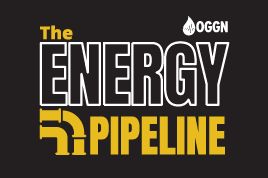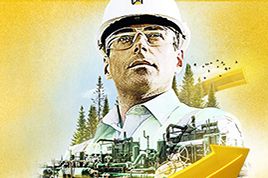

Sign In
Welcome! Sign In to personalize your Cat.com experience
If you already have an existing account with another Cat App, you can use the same account to sign in here
Register Now
One Account. All of Cat.
Your Caterpillar account is the single account you use to log in to select services and applications we offer. Shop for parts and machines online, manage your fleet, go mobile, and more.
Account Information
Site Settings
Security
A Break From the Past
Fraccing has resulted in energy security, but questions remain
By Danielle Foelber | Posted January, 2024
Parts & Services
-
Cat® Engine Lifecycle
Learn More -
Customer Value Agreements for Oil & Gas
Learn More -
Digital Services for Oil & Gas
Learn More -
Gas Compression Training
Learn More -
Finance and Warranty for Oil & Gas
Learn More -
Parts and Repair Options for Oil & Gas
Learn More -
Cat® Reman Solutions for Oil & Gas
Learn More
Sustainability
About
Hydraulic fracturing (“fraccing”) is a complex, multi-step process that allows access to previously inaccessible oil and natural gas reserves.
Fracturing shallow and hard rock wells to extract oil dates back to the 1860s. During that time, nitroglycerin or dynamite was used to increase oil and natural gas output from petroleum-bearing formations. In the late 1940s, petroleum engineers used fraccing as a means of increasing well production. In 1947, the practice of hydraulic fracturing started as an experiment by Floyd Farris of Stanolind Oil and Gas Corporation. The first successful implementation of the process took place in 1950. Since then, fraccing has been performed worldwide on oil and gas wells.
Fraccing has been documented in more than 30 U.S. states, and is particularly widespread in North Dakota, Pennsylvania and Texas. And it's expanding into new areas, including California, New Mexico and Nevada. Globally, the hydraulic fracturing and services market was valued at $59.780 billion (USD) in 2022, and is projected to reach $86.140 billion by 2029 at a combined annual growth rate of 5.4 percent during the forecast period, according to a report from Stats Market Research.
Key steps in the fraccing process include drilling a well deep into the earth’s crust, often extending several thousand feet below the surface. Then a high-pressure mixture of water, sand, and chemicals is pumped into the well. This pressurized fluid fractures the rock formations, releasing the trapped hydrocarbons. In the recovery phase, the released oil and gas are collected and brought to the surface for further processing.
Advantages of Fraccing
Innovations in drilling and hydraulic fracturing have enabled tremendous amounts of natural gas to be extracted from underground shale formations that were long thought to be uneconomical.
Fraccing increases the rate at which water, petroleum, or natural gas can be recovered from subterranean wells. It has also allowed the extraction of unconventional oil and gas resources from low permeability sites where traditional extraction technologies fail.
Fraccing as a method for oil and gas extraction is more economically viable than conventional or horizontal drilling. In the U.S., domestic oil production has grown significantly with the introduction of fraccing, reducing reliance on imported oil and gas. Today, the U.S. has actually become a net exporter of fossil fuels, in part, due to fraccing, according to the U.S. Energy Information Administration. The process has driven down gas prices and offered gas security to both the United States and Canada.
“Hydraulic fracturing tapped the great reservoir of America’s natural resources. That technology made the United States the world’s largest oil and natural gas producer, while also creating high-paying jobs and delivering great consumer savings,” said former Assistant Secretary for Fossil Energy Steven Winberg in a report issued in January 2021 by the U.S. Department of Energy detailing the economic and national security impacts of a hydraulic fracturing ban.
Fraccing also helped to revitalize local economies in some parts of the United States. In particular, many parts of the country that historically relied on industries like steel and auto manufacturing to generate jobs turned to fraccing. The success of fraccing after 2008 helped the economies of Ohio, Pennsylvania, and other industrial states with oil resources recover from the recession.
DisAdvantages of Fraccing
Most of the opposition to fraccing revolves around its potential negative impact on the environment. Fraccing typically produces methane emissions, which are a potent source of greenhouse gas.
Fraccing also consumes billions of gallons of water each year that might otherwise be available for human consumption. Moreover, the chemicals used in the fraccing fluid can pose health risks to workers and communities near fraccing sites. Wastewater from the fraccing process can leak into surrounding water sources and contaminate drinking water.
Another area of concern is that fraccing can potentially lead to increased seismic activity. There is controversy over whether earthquakes are directly caused by fraccing, or caused by the disposal of wastewater generated by the fraccing process.
Also, fraccing operations can disrupt local ecosystems by impacting wildlife.
At this juncture, the science of fraccing is far from settled. While fraccing has boosted energy production and economic growth, it also raises environmental and health concerns. The decision to support or oppose fraccing often comes down to weighing the delicate balance between energy needs, economic considerations, and environmental stewardship.
As technology and regulations evolve, it is essential to continue studying the long-term effects of fraccing while seeking reduced carbon solutions.
Elena Melchert is a consultant to the oil and gas industry, and a former director of upstream oil and gas research at the U.S. Department of Energy. Tune into The Energy Pipeline Podcast as she discusses the fundamentals of fraccing.
Related Content
-
The Energy Pipeline Podcast
Ready to learn about all things Oil & Gas? Listen to The Energy Pipeline Podcast, powered by Cat Oil & Gas. The Energy Pipeline is a new podcast that provides fresh insight every week on issues impacting our industry. Learn from the brilliant hosts who combined provide over 50 years of industry experience enabling you to elevate your insight into today’s most exciting topics. From hydraulic fracturing to the future of the industry through sustainable lenses, there’s so much to listen to. The Energy Pipeline is the latest of many podcasts produced by Oil and Gas Global Network™ (OGGN™), the world’s largest network of oil and gas podcasts, educating listeners on a variety of topics.
Learn More -
The Cat® Blog
The Cat Blog is dedicated to sharing expert advice and industry knowledge to help our customers do the work better. Read our customer stories, tips and resources.
Learn More -
Oil & Gas
Discover Caterpillar oil and gas solutions and applications. Designed to be durable and efficient, our oil and gas generators are prime movers that deliver low operating costs.
Learn More


